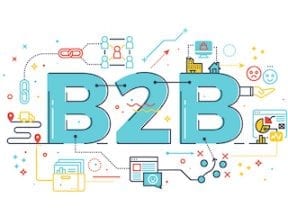
Outdated software systems can prevent B2B companies from providing the modern ecommerce experience professional buyers seek. Photo: Andreas160578.
Most B2B executives believe legacy software and disjointed platforms are bogging down their ecommerce and digital growth.
Some 54 percent of B2B leaders surveyed said that their company’s technology stack was “holding them back from their digital agility goals” and 59 percent believed that legacy software was the “root cause” of their business’s technology problems, according to an Episerver survey of 700 business-to-business decision-makers.
Many manufacturers and distributors acquired enterprise resource planning software or similar systems decades ago. They made significant investments for servers and “enterprise” software licenses. At the time, these expensive systems offered a huge improvement in productivity.
However, the costs associated with buying, upgrading, and replacing these early solutions made some businesses reluctant to purchase up-to-date software and platforms. The result is that some B2B companies are relying on legacy systems that are not capable of providing the modern B2B ecommerce experience professional buyers seek.
Legacy Systems
There is a myriad of problems with old, outdated B2B software. But four categories could describe them all.
- Cost. Many legacy systems are proprietary, requiring expensive license and service agreements. It is not unheard of for a business to spend several hundred thousand dollars for new modules or features that would otherwise cost a few thousand dollars to develop on a modern and open application stack.
- Security. Aged, antiquated systems can be relatively less secure as hackers identify unpatched vulnerabilities. Moreover, legacy systems are frequently not maintained.
- Capabilities. Legacy systems often limit a B2B business’s ability to add the features and capabilities to support a robust ecommerce experience. For example, old product management solutions often have no concept of product groups. So a manufacturer or distributor cannot manage, say, the same style of jeans across multiple sizes.
- Productivity. Outdated software could also hurt productivity. No matter how good some employees become at working with or around antiquated software, there is still a cost in time, labor, and general inefficiencies.
For example, a multichannel chain in the northwestern United States used a legacy, text-based ERP. One of the company’s longstanding employees was a master at the system. Having nearly 20 years of experience, she could string together keyboard shortcuts — sometimes using six or seven in a row — to reach a particular screen or complete a repetitive task. As good as she was, new employees were clueless and could take months to train.
All of these categories — costs, security, capabilities, and productivity — can hinder a B2B company’s ability to offer a robust digital-buying experience.
This is unacceptable. Professional buyers increasingly evaluate their suppliers based in part on the buying experience and the efficiency of purchasing (i.e., ecommerce).
Legacy Software
Manufacturers and distributors can attack legacy software in a number of ways. But there are two common strategies.
Wrap the old software. A legacy system can be replaced gradually using what some in the software industry call the strangler pattern.
Typically this involves placing a facade or wrapper around the legacy system that allows a new solution to access its data and make use of its business logic.
As an example, a company might use GraphQL (a data query language) to create an API that accesses a legacy accounting solution. The GraphQL API could then interact with customer portals, the ecommerce website, and systems from outside accountants.
At first, this GraphQL wrapper might rely on the legacy accounting software completely. But over time the business could replace the accounts-receivable module with something modern. The users — who would now get their data via an interface connected to the GraphQL API — see no change, but a piece of the underlying legacy system has been replaced.
One-by-one each remaining module or service is updated.
Update systems at once. The slow and patient strangulation method described above doesn’t work for every business. Sometimes it pays to pull the Band-Aid off entirely, all at once.
In this approach, the company will often target a specific system. For example, imagine your B2B business desires a customer accounting portal as part of the company’s ecommerce platform.
Your current accounting software won’t do the trick, so you begin to work with a new system, perhaps an Acumatica module. You implement the new system in parallel with the legacy system. For a while, your business may have to enter invoices twice. But the double entry allows time to test the new system and train your accounting staff.
Once everyone is comfortable, make the switch.




